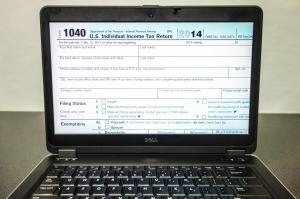If you still have not received the Economic Impact Payment included in the CARES Act signed into law in mid-March, now is the time to contact the IRS to ask about where it is. Back on June 3, the IRS said it sent out 159 million stimulus checks already, totaling almost $267 billion. More than 120 million Americans received their checks as direct deposit payments, while another 35 million received them by check. Towards the end of the program, the IRS began sending the payment out as a pre-paid debit card, and 4 million of those were sent out.
The IRS set up two ways to check the status of payments. First, there is the “Get My Payment” tool at the IRS website. American taxpayers have to just put in their Social Security Number, date of birth, street address and ZIP code to check on the status. Initially, the agency warned Americans not to call the IRS to find out the status, but on May 18, that changed. The IRS set up a special Economic Impact Payment hotline at 800-919-9835.
Videos by PopCulture.com
When Americans call the number, an automated phone message will play to hopefully answer any questions a taxpayer may have. If the messages do not, you can stay on the line until you reach a representative. The IRS added 3,500 telephone representatives to answer questions. However, the IRS reminded Americans that they are constantly updating the Economic Impact Payment Center, which includes answers for just about every question.
Before you look into the status of your payment, note that not everyone qualified for a payment in the CARES Act. Individual Americans who filed federal taxes for 2018 or 2019 and have an adjusted gross income $75,000 or less received a $1,200 payment. Joint-filers received double that if their AGI is $150,000 or less. A head-of-household had $500 per dependent under 17 added to their check. Individual Americans with an AGI between $75,000 and $99,000 were still eligible for a payment, but the amount they received was adjusted under $1,200 based on their income.
If you do not have to file taxes, you could still receive a stimulus check. If you earned a gross income under $12,200 (or $24,400 for a married couple) in 2018 or 2019, you did not need to file taxes. The IRS will need more information, and that is what the Non-Filers tool is for. You can use the tool through Oct. 15.
The stimulus check in the CARES Act was a one-time payment. There have been several proposals in Congress for a second stimulus check, including the House-passed HEROES Act. While Congress has taken on other issues, including police reform, work on a fifth coronavirus stimulus package has been put on hold. The Senate is also set to start a two-week vacation in July and then will only have two weeks before the August recess.




